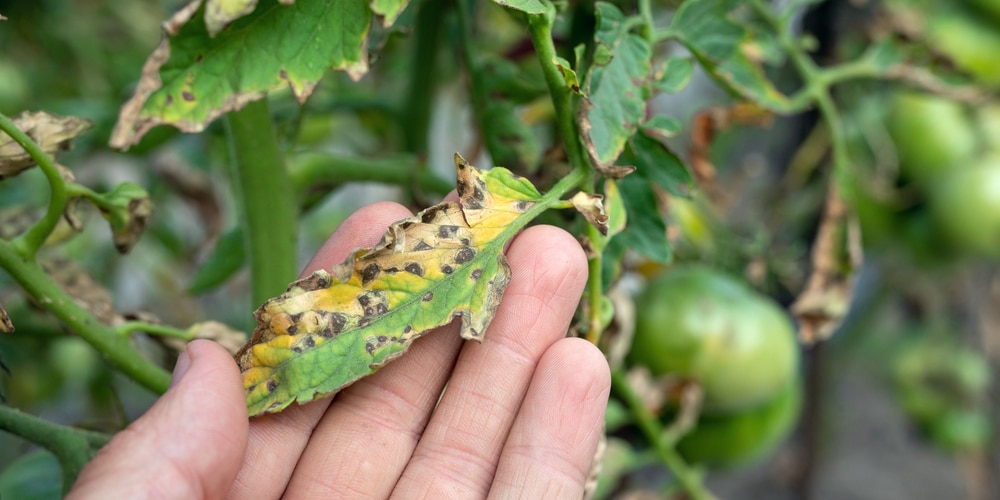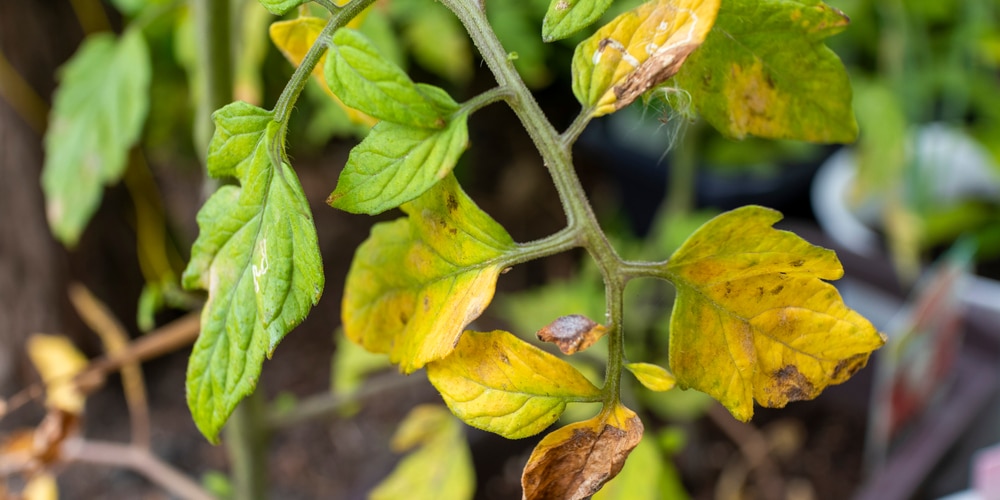Tomatoes are one of the most common vegetables for many gardeners. After all, they are relatively easy to grow (in the proper climate) and can bring plenty of satisfaction if you learn to meet their nutrients and requirements. Indeed, with adequate care, tomatoes are prolific producers. However, sometimes your plant might have some issues. And if tomato leaves are yellowing, many gardeners might start to worry about their plants.
But we have good news for you! Identifying the root cause of the issue can help you take measures to revert the problem. And to help you do that, we collected all the information you must know about tomato leaves yellowing in this essential guide.
Keep reading to learn everything you must know on the subject. With this information, you should get to know how to behave when such a condition appears on your plants.
Why Are My Tomato Plants’ Leaves Turning Yellow?
It happens to everyone. The yellowing of tomato plants’ leaves is a common issue when growing these fruits.
But luckily, with the proper knowledge and prompt action, you’ll be able to revert the condition. Here is a list of some causes of discoloration. Of course, we also included tips for getting rid of the problem).
Before we get into the possible cause of discoloration, let’s clarify something. Many gardeners start worrying when they notice their young seedlings producing yellow leaves.
But the truth is that the first leaves you see when growing a plant from seeds are usually yellow. That is because they are the so-called “seed leaves.”
Inadequate Watering
With plants, one of the most common sources of issues is watering. That is because each species has different requirements, which you’ll have to adapt to your local climate (and growing conditions). Tomatoes need plenty of moisture to produce fruits.
However, many gardeners overdo it with water. And this often leads to yellowing, root rotting, and the appearance of fungal infections. That is because too much moisture can make your plant unable to absorb essential nutrients from the soil.
Indeed, water can suffocate roots and cause them to rot. To prevent this, don’t forget to feel the ground with your fingers before adding extra water. The top 1 or 2 inches of the substrate must be dry for you to water your plant.
Similarly, not giving enough water to your tomatoes might cause yellowing. You can identify the lack of moisture as a cause of issues by looking at the color of your plant’s leaves. You’ll need to increase the watering frequency if they start getting yellow from the edges
We recommend watering your tomatoes early in the morning or in the evening. Doing so will minimize evaporation and prevent damage to the leaves. Also, never pour water on the foliage, as this might attract pests and other diseases. If you overwater your plant, remove it from the current position and place it in a new substrate.
Inappropriate Soil
Soil is crucial to the health of your plants. Tomatoes thrive in aerated and well-draining soil, where their roots can access all the oxygen and nutrients they need to grow. When the substrate is inadequate, your plant might display yellow leaves as it won’t’ be able to transport oxygen, water, and nutrition.
Avoid using compacted soils: if the substrate you use is too heavy, add sand or gravel. Also, consider aerating it manually (taking care not to harm the plant’s roots). Additionally, you can apply organic matter around your tomatoes. Doing so will increase the soil’s nutrient content, increase drainage and water retention, improve aeration, and prevent thermal shocks.
Stressful Growing Conditions
Yellowing might be a symptom of stress. Yes, tomatoes too can be stressed if you don’t take good care of them! Such a condition usually happens after transplanting.
For instance, when you grow your plants from seeds and need to move the seedlings outdoors, your plant’s leaves might turn yellow. But, most of the time, this condition will only be temporary. As the plant gradually adapts to the new environment, its leaves return to their natural green color.
Remember that tomatoes prefer warm environments. So, they usually don’t do well at low temperatures. For this reason, you must avoid exposing them to temperatures below 50°F which might kill your plant. If you notice yellow leaves on your plant, remove them and take action to improve the growing conditions. Doing so will contain the issue.
Pests and Diseases

Humans love tomatoes. But they are not alone. Indeed, pests do too. And this might be an issue for many gardeners. Keep an eye on your plants to minimize the spread of bugs and diseases.
Fungal infections usually start with browning and are linked to following an inadequate watering schedule. Never leave such issues without treatment, as the problem usually aggravates with time. You’ll be able to manage most issues by taking early action. Start with organic solutions (depending on the severity of the condition) to prevent harming your plant or beneficial insects.
However, if the situation worsens, don’t be afraid of using synthetic treatments. Of course, use them carefully and follow the instructions you find on the label.
You May Also Like: Reviving a Basil Plant

